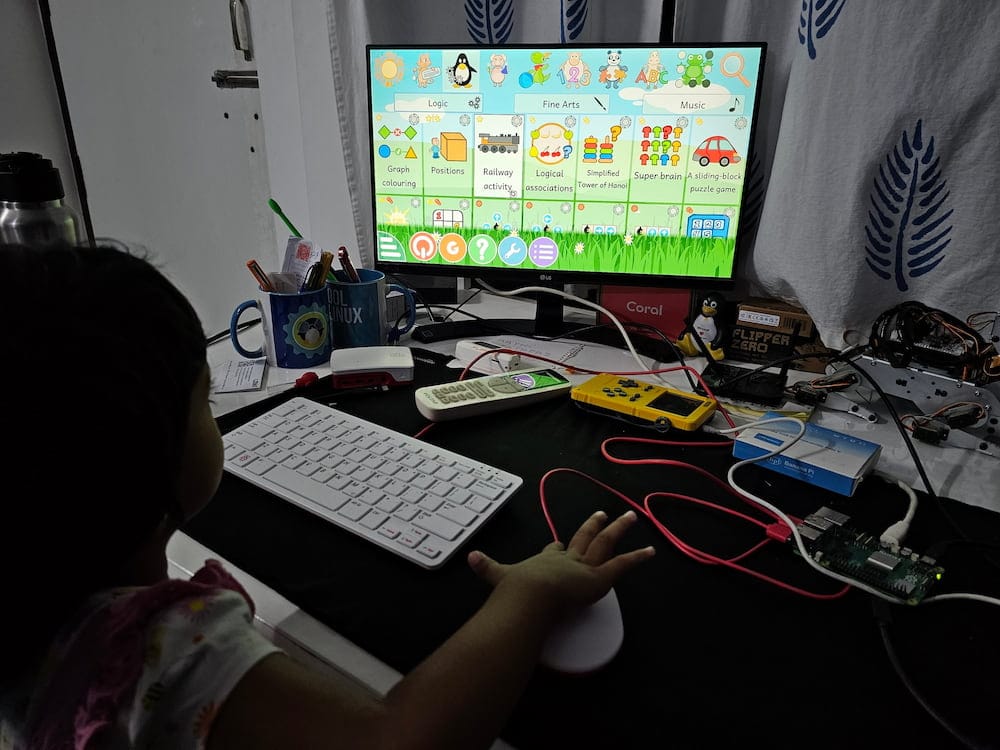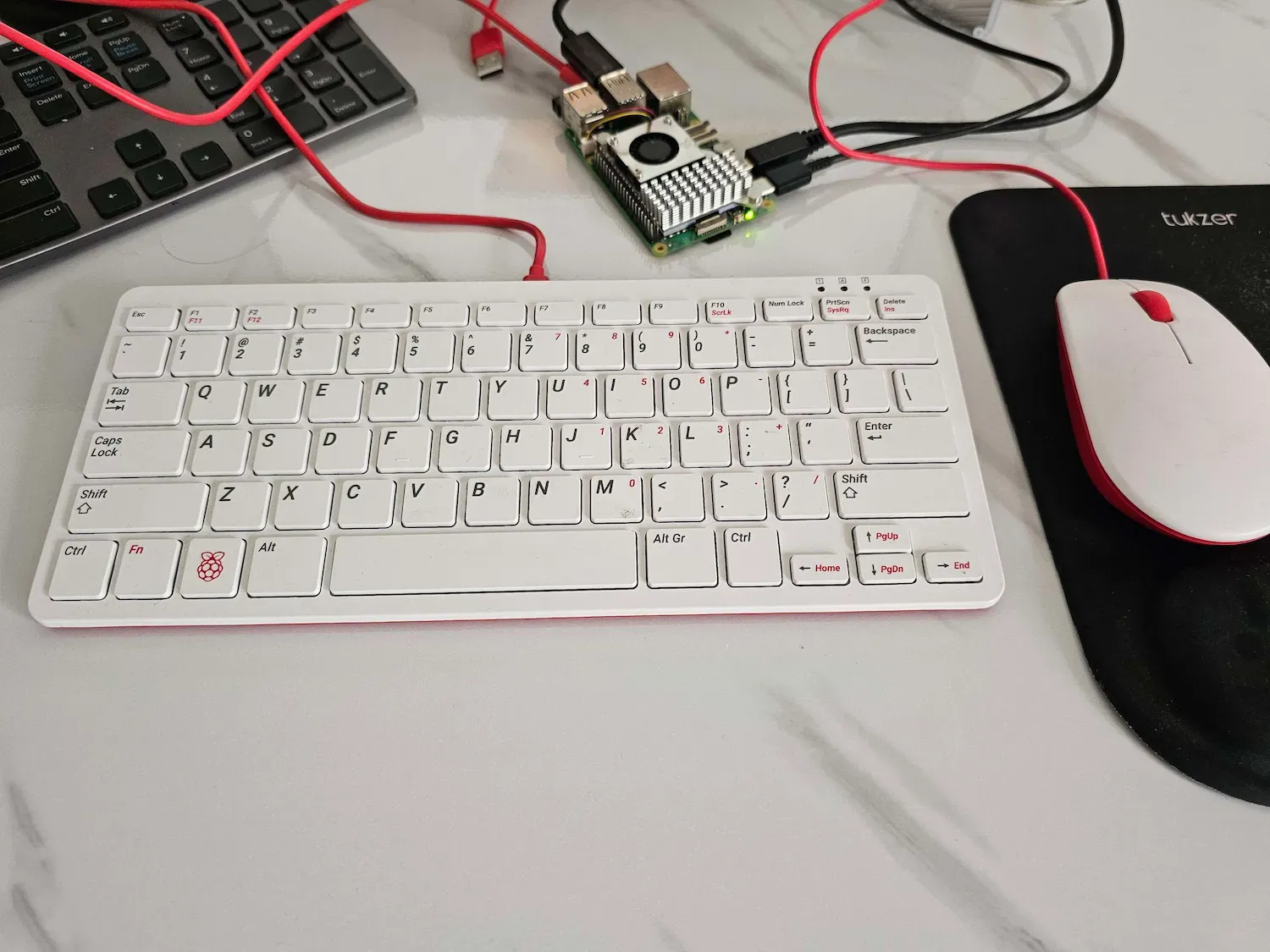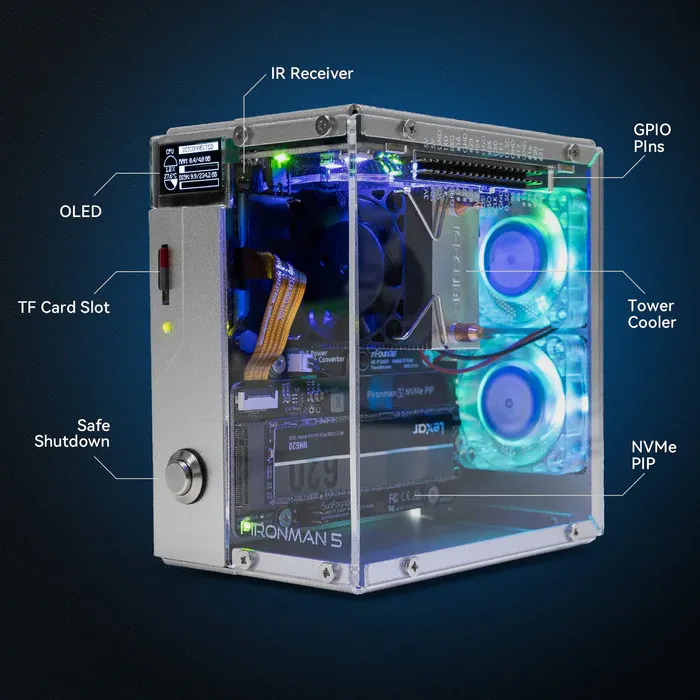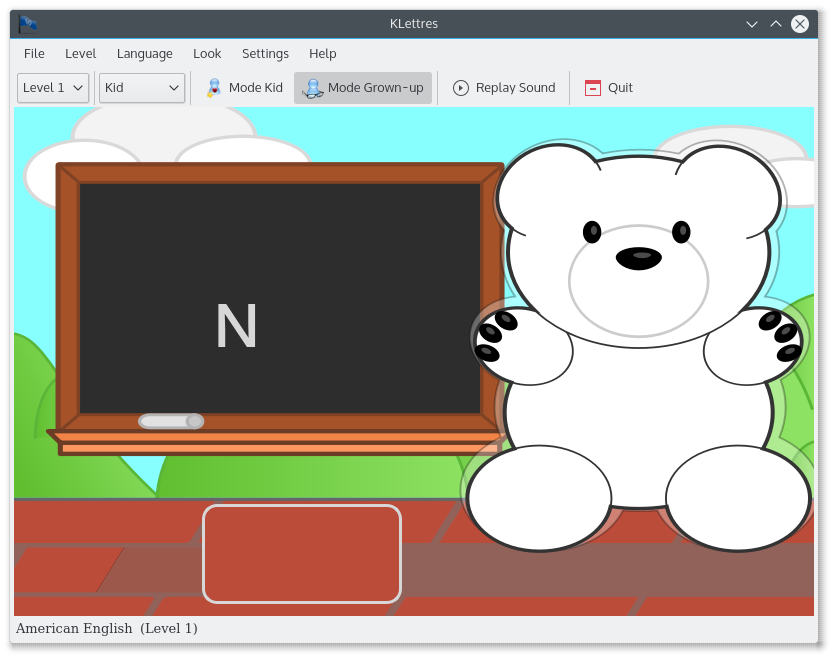
Children are getting smarter these days. They are in touch with smart devices, after all.
It is no more surprising to see children as young as one year old interacting with touch-based phones and tabs.
While parents worry about excessive screen time, computer education is essential at the same time.
This is why I decided to set up a dedicated computer running on Raspberry Pi for my three-year-old daughter, Ushika.
I shared an image of this setup on Twitter and some people suggested that I should write an article about the things I've installed as it would interest many Linux using parents.

And thus here we are!
What's the point of a dedicated system for a 3-year old?
A dedicated system is important. I let Ushika use my laptop and she will consider it HER toy and start demanding it even when I am using it for work. This is not ideal for me.
Is she too young to use a computer? I don't know. Kids these days can operate a touch device at a much earlier age. The traditional desktop setup is different. Mouse control itself is a challenge, at least in the beginning.
The idea here is not to teach her coding and 'force' her into becoming a computer wizard. I just want her to interact comfortably with a traditional computer system using a mouse and keyboard.
In any case, Ushika has had a strange fascination with my keyboard since she was hardly five months old so I guess it was time to introduce her to the the 'real computer'.
Hardware I use and recommend
Here is what I used in the setup. If you plan to buy a Raspberry Pi after reading this article, this list will help you determine what other accessories you need besides the Pi board.
Board: Raspberry Pi 5 4 GB. The 4 GB model would work fine as well; however, if you are buying a new one and your budget allows, you prefer going for the higher RAM model for the device's longevity. I have both 8 GB and 4 GB models sent by Raspberry Pi for review.
SD Card: Anything above 32 GB is more than sufficient.
Power supply: The official Raspberry Pi power supply. While you may power the Raspberry Pi 5 with a regular smartphone charger (5V-3A), but it will complain about not having enough power for peripheral devices (it requires 5V-5A in output).
Keyboard and mouse: I had the official Raspberry Pi keyboard and mouse but you can use any inexpensive or spare ones.

Screen and micro-HDMI cable: This is a must for obvious reasons. I utilized my old LG monitor. Please keep in mind that you'll need a micro-HDMI to HDMI cable/converter, as Pi 5 only has micro-HDMI ports.
Speakers: I highly recommend using any speaker (or headset) because it is more fun for children to hear the feedback on their actions in the program they use. I used my Killburn Marshal speakers because I didn't have desk speakers and I don't want my 3 year old to use headsets from such a young age. I have ordered a simple desk speaker to complete the setup.
Cooling: The official active cooler or any other means of cooling is highly recommended.
Case: I used the Pironman case as this super cool case has an in-built cooling tower. But you can use the official case or any other case. I recommend using a case open board could be fragile in the hands of young children.

Pironman 5 Case With Tower Cooler and Fan
This dope Raspberry Pi 5 case has a tower cooler and dual RGB fans to keep the device cool. It also extends your Pi 5 with M.2 SSD slot and 2 standard HDMI ports.
Software I use and recommend
Here's the software I have used so far:
Operating system: I chose to stick with the default Debian-based Raspberry Pi OS instead of using a distro tailored for educating children. It is the applications that matter, not distro. Better to have an OS that is specifically created for the hardware in use. It is easier to look for troubleshooting material on the web (if there are any) for the Raspberry Pi OS.
gCompris: This single application offers more than 100 activities for children aged 2 to 10. This is the main application my daughter is interacting with at the moment.

There are games that help gain mouse control and get familiar with the keyboard. In addition to that, there are small games that involve memory matching, clock reading, basic mathematics, logic puzzles, etc.
KLetters: This educational app from KDE helps learn the English alphabets and read simple syllable. Entering the letters also make a good exercise for the kids to get familiar with the letter positioning on the keyboard.

TuxPaint: As the name suggests, this is a simple paint application for Linux systems. It lets children draw on the computer. You'll find this application used in many schools as well.
There is also TuxMath which helps children learn basic mathematics through games. I haven't used it yet because Ushika is too young for that. She can count but she cannot do mathematical calculations yet.
How is it going?
Ushika struggled with the mouse for the first two days. She has tiny hands and it was difficult for her to both move the mouse and do the left click. She started using the mouse wheel for movement and clicking both and I had to repeatedly correct her.
I even considered buying a tiny mouse until she saw signs of improvement with a Dell mouse a week later. She successfully finished a 'memory matching' game on her own.
Her mouse handling has certainly gotten better. The next goal is to get her comfortable with the keyboard.
With the KLetters app, she tries to enter the letter displayed on the screen. There is initial struggle of finding the correct keys that are not in alphabetical order. With some practice, she will surely get better.
What next?
I intend to change the default wallpaper on my Raspberry Pi 5. Ushika sees the wallpaper and thinks it's 'her computer' and demands that I move away and let her use it 😆
Jokes apart, I am glad to see that she has progressed pretty soon. Keyboard practice is what I aim for next with her computer training.
As I mentioned in the beginning, the idea is not to teach her coding at this stage, although many programs teach coding to young children. My main motive is that she gets comfortable using the mouse and keyboard. Interacting with touch devices is simple, but controlling a mouse is different. Children should get familiar with the 'traditional computer' if they have the opportunity.
In a couple of years, when she grows a bit older, I could let her use CodeMonkey, a platform specialized in introducing kids to the world of coding in a fun way.
I plan to update this article as time progresses and share what else is working (or not) with little Ushika's computer education.
If you have experience teaching computers to young children, please provide your valuable feedback and application suggestions in the comment. This will help people who are looking for advice on educating their children.

